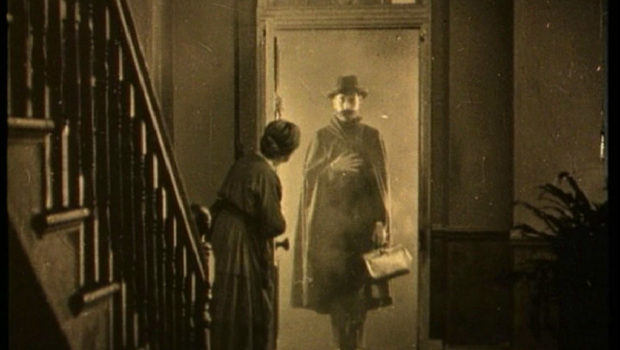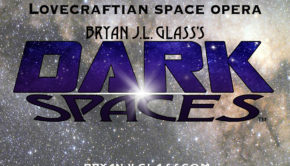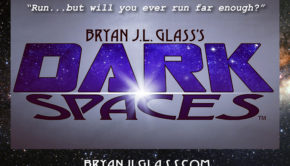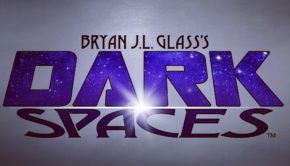An Observation on Contemporary Horror
Contemporary Horror
Recent Insights into Modern Interpretations of the Genre
By Bryan J.L. Glass
First, what this essay is, or better yet what it is not. This is not, as its title suggests, a comprehensive view of the current state of horror in all of its various mediums and multitude of sub-genres. It is more in line with its subheading, a highly subjective and personalized interpretation of a distinct sub-genre.
I have recently received the opportunity to develop two brand new supernatural horror properties for the medium of comics’ storytelling. While each are exciting and intriguing in their own way, the realization swiftly washed over me of just how unfamiliar I was with how the current new millennium audiences understood the genre. Below is the result of my research to determine if I still felt qualified to add anything this generation might consider meaningful to the legacy of horror.
I have endeavored to be as spoiler-free as possible. Although some plot points are raised, no revelations are exposed to ruin your own viewing.
A Definitive Trio
My experiences, interest, and fandom, rest squarely upon horror as 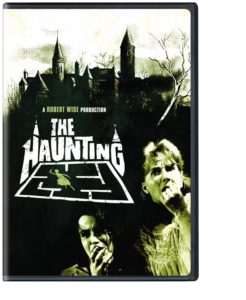 conveyed by suspense—a less is more, and left to one’s own imagination appreciation of the genre. An absolute classic for me of how effective the genre can be when using this approach is director Robert Wise’s brilliant 1963 film adaptation of Shirley Jackson’s novel The Haunting of Hill House, titled simply The Haunting as if declaring there would be no need for any others to follow.
conveyed by suspense—a less is more, and left to one’s own imagination appreciation of the genre. An absolute classic for me of how effective the genre can be when using this approach is director Robert Wise’s brilliant 1963 film adaptation of Shirley Jackson’s novel The Haunting of Hill House, titled simply The Haunting as if declaring there would be no need for any others to follow.
Mood is king, while suspense holds court as queen; a tour de force thriller that gets under your skin, raises the hair on your arms, and unsettles your spirit through what it doesn’t show or reveal.
A simi lar spirit is evoked in another example: 1974’s film adaptation of
lar spirit is evoked in another example: 1974’s film adaptation of
Richard Matheson’s novel Hell House, re-christened The Legend of Hell House.
A minimal, no-nonsense script, potent cinematography and powerful performances deliver yet another tale where little is shown yet it revels in its darker implications without restriction.
 My personal favorite spook-fest is the more light-hearted contribution to the genre: The Uninvited from 1944. Yet even this gothic romp, while by far the friendliest of ghost stories, still elicits goose flesh when its supernatural manifestations occur, because every bump in the night has been earned by the building tension in each new twist in its narrative, and an emphasis on rising dread in place of shocking reveals.
My personal favorite spook-fest is the more light-hearted contribution to the genre: The Uninvited from 1944. Yet even this gothic romp, while by far the friendliest of ghost stories, still elicits goose flesh when its supernatural manifestations occur, because every bump in the night has been earned by the building tension in each new twist in its narrative, and an emphasis on rising dread in place of shocking reveals.
A Perspective on Changing Tastes
Those three films, while not alone in their
exemplary execution, represent the heart of my personal appreciation for supernatural horror! But in 1977, a relatively low-budget film came along that changed the course of the genre for decades. John Carpenter’s classic Halloween transplanted the vengeful spirit consumed by the drive of its mysterious unfinished business—the motivation behind most “ghost stories”—to a very physical and imposing figure that left a swath of bloody corpses in its wake. Within a few short years, Halloween’s Michael Myers was joined by Friday the 13th’s Jason Voorhees and A Nightmare on Elm Street’s Freddy Krueger. The exhilarating horror audiences derived via spectral entities born of this world or the next was rapidly supplanted by the murderous exploits of a veritable cinematic avalanche of supernatural serial killers. As Stephen King observed in a recent TCM documentary, the era of the “Slasher” film offered franchise villains whom audiences could actually root for against their hapless human victims with an enthusiasm not seen since the heyday of the classic Universal Monsters of the 1930s-40s—Dracula, Frankenstein, the Mummy and the Wolf Man—or their resurgence at Hammer Studios of England during the 60s.
Despite their varied origins, however, most of these new generation boogeymen turned out to be just further variations on Leather Face, sacrificing teenagers like slaughtered sheepskin—as derived from Tobe Hooper’s otherwise classic The Texas Chainsaw Massacre before its franchise was reduced as well by a repetition of sequels and remakes.
Such franchises dominated the cinema horror market for an entire generation until fizzling out of steam in the 90s. Yet they were replaced by an even darker vision of horror entertainment—“torture porn” wherein the plot is more often than not but a flimsy excuse to place otherwise reprehensible characters into situations that allow judgment to befall them, usually in the form of sadistic mental torture and visceral disfigurement before their ultimate bloodletting demise. The spirit behind the Roman coliseum renewed, guilt free, and brought to life each weekend at your local Cineplex!
The Problem and My Plan
When I was given these potential opportunities to add my own contributions to the oeuvre of horror, I realized I had no true comprehension of what current audiences understood as horror. When I risked comparison of my interests with viewing decades of theater preview trailers and television commercials for films I never saw, I suspected that my understanding was on one side of an otherwise un-crossable chasm between what I enjoyed and what was now the accepted norm.
Fearing my views were antiquated, I put out a call via social media for recommendations of what constitutes a contemporary representation of horror cinema, as movies are the most prolific form of the genre. I had very specific needs in mind, as well as equally specific restrictions: no found footage (unless an excellent example of the motif); no serial killers, human, spectral or unearthly; no torture porn. What I wanted were primarily ghost stories, or their variant demonic oppression, but of greatest importance was their portrayal of supernatural manifestations.
Although we received many recommendations, I settled on the following playlist: Insidious I-II, Mama, The Innkeepers, The House of the Devil, The Evil Dead remake, The Conjuring and Sinister. And because I had heard so many commentators previously disparage Insidious as some form of swipe from 1982’s Poltergeist, I decided to kick off my viewing with the first two films of that ill-fated 80s franchise; but more on those comparisons further down.
An Insidious Homage
Watching both films of its franchise in one night, I felt the Insidious series to be an ambitious, heart-felt love letter to the genre of supernatural horror, as both films not only stood on their own but were also filled with nuanced homages and nods to so many classic films that had come before. From the title frame so reminiscent of Dario Argento’s Suspiria to its very story structure not so much lifted from Poltergeist as inspired by the Hooper/Spielberg collaboration. The boy’s coma is synonymous with the girl, Carole-Ann’s spiritual abduction, while her living light attracts the dead spirits just as the boy’s comatose body, empty of his own spirit, attracts those seeking to inhabit and possess it, and all culminating in a parent daring the other side to rescue their child. Even the sequel follows the Poltergeist formula with its introduction of an elderly spirit seeking not the child, but the father since his own childhood. The parallels are striking and impossible not to see, yet, while Poltergeist’s sequel damaged its legacy, Insidious is surprisingly enhanced by its own second chapter. But while this is more of an observation on plot comparisons between a film and its inspiration, what mattered to my research project was the execution…
Wan & West
In one weekend I have become a fan of director James Wan. What has encouraged me the most about his work in the genre is that he has become a highly successful filmmaker in a genre now known for unrelenting shock, unlikable characters, and explicit gore, and has achieved his notoriety with restrained use of the many tropes available to him, all while restoring the audience’s empathy and sympathy for his protagonists in both the Insidious series and The Conjuring. In many ways I feel his work is elevated by how he plays with his audience’s cultivated anticipation. He builds to a shock that he doesn’t necessarily deliver on; he cuts away, or reveals it was a practical joke played by another character in the tale, or that it was even a simple red herring against both the frightened character as well as the audience following along. Some of his shocks when delivered are mild; others de-fanged altogether, only to be followed by another more serious shock viewers weren’t expecting. Then of course he’s also capable of delivering the big guns before all is said and done. But the significance remains: he’s showcasing himself as a master of manipulation and deception, which is what an audience actually wants from a thrill ride spook show! Wan has proven so adept that every potential shock is riveting, as one never knows if or what will be delivered. His formula appears to be the disregard of expectation, and in doing so exceeds expectation. The three Wan films viewed, in conjunction with his earlier effort Saw, each served in direct contradiction to another film on the list, the remake of The Evil Dead, but more on that observation later.
Another delightful discovery of the weekend was Ty West’s The Innkeepers, which also played with audience expectations, delivering slow-burn scares that heightened anxiety; yet another contemporary horror-meister holding back his delivery of the shocks, and being rewarded by an attentive and appreciative fandom. An earlier West film, The House of the Devil, was also viewed and enjoyed for its similar craft and execution, yet ultimately proved more of a suspense thriller with a paranormal bent, instead of a purely supernatural tale delivered via suspense and thrills; a subtle yet significant distinction for the criteria of my research.
The Simplicity of Horror
With each of the primary films mentioned thus far (deferring their sequels for a different observation below), an unexpected revelation occurred to me. That “ghost stories” and supernatural thrillers are at their core mysteries has long been understood. The unease we feel while watching, as well as the thrill that uncertainty generates, are derived by a sense of the unknown. The paranormal does not operate by our rules, and thus all bets are off—anything can happen because we don’t know the rules of this otherworld intruding upon our own reality. But while a traditional murder mystery follows the established rules of our physical world, their seemingly endless twists, turns and the often contradictory complexities of the human psyche, are not only welcomed but expected in order to distinguish or elevate each plot beyond what has been done before. Yet my observation of supernatural horror revealed quite the opposite: otherworldly mysteries are already complex by their very nature of defying our rules. A good ghost story is often very simple in origin, and it is this very simplicity I believe that contributes to the potency of its scares. The manifestation is mysterious enough, yet the moment its solution is similarly convoluted, more mental energy is directed by the audience into solving a tangible mystery than in being thrilled by the unexpected. The more complex the solution to its mystery the less spine-tingling a supernatural tale becomes. To remain effective as a thriller, I posit that the ghost story or paranormal incursion requires a simple origin that is then obscured by its own manifestations. Although they must remain entrenched by their own mythos, the ghost or demon doesn’t offer clues to the mystery so much as they strive to distract from the truth. While it is established in many classic ghost stories involving an unfinished task and a spirit desperate that some truth be exposed, malevolent entities are often de-powered or destroyed by revelation; their malevolence is often tied to an answer not being found. Thus, my conclusion is that in such tales, simplicity is the creator’s friend, and complexity is the window dressing of misdirection.
The Subjectivity of Terror
Another insight derived from director James Wan’s approach relates to the subjectivity of what terrifies. What scares you might not scare me, and vice-versa—while the audience of any film is automatically an outside observer of the events unfolding onscreen. So I presume the greatest challenge faced by any horror storyteller seeking success in a mass medium is finding the greatest balance of mutual experience, and enhanced just enough to engage the passive observer. Like many who have had their own encounters with the supernatural, I know what it is like to have lived for a season within a “haunted house.” My experiences, if translated to the screen as they literally occurred, would terrify no one, as I encountered nothing as flamboyant as what manifests in the most basic of spook house tales. And yet, as I and other members of my family experienced the events in our home, no terror generated by any movie holds a candle to the fear we experienced in the heightened senses of our own haunting. I feel this is part of the secret behind Wan’s technique. By deliberately refusing to deliver on every ominous portent he offers, the suspense is akin to what those who have experienced supernatural horror in their own lives felt when they lived under its influence: so many nights of potential terror left unfulfilled until you are led to an inevitable lowering of defenses…and that’s when the phenomena strikes again, inducing the greatest fear because you had only just convinced yourself that nothing was actually there. I believe there is such a universal touchstone to this experience that when the approach is applied to film, those movies are elevated beyond those that thrive solely on shock and gore effects.
The Definition of Character
Crucial to the effectiveness of this approach are protagonists that actually elicit identification from the audience. Thus, this connection is not made with the average characters in most “torture porn,” as each victim is typically presented as somewhat deserving of their horrific fate; just as the parade of teenaged corpses that fall in the wake of a serial killer franchise are often led to their demise by some suggested moral lapse. If an audience doesn’t care about what fate might befall the character onscreen, or worse, root for the ghastliest evisceration, then the rollercoaster of suspense with its frequent bait-n-switch approach will only frustrate and anger the audience, or lead to otherwise unwarranted laughter and ridicule which so often accompanies the hapless explorer of the supernatural that leaves the relative safety of the group to go searching the spooky locale on their own. Again, Wan’s films—from Saw through Insidious to The Conjuring—all offer remarkably human characters, warts and all. They are complex and flawed, and are not necessarily deserving of neither their doom nor their redemption. They are us, and thus we’re invested in their fate.
The Deficiency of Sequels
In seeming contradiction of my previous praise, Insidious II also offered me another insight into sequels that was less favorable yet equally vital to my understanding. Sequels come in several forms, but all constitute a continuation of some aspect of their predecessor: the direct continuation of a tale left incomplete in the first presentation; the further adventures of the protagonists, and/or the ongoing horrors of the franchise monster or manifestation; or even the “prequel” that promises to reveal the origin of whatever set the first tale in motion to begin with. My weekend contained two sequels: Poltergeist II: The Other Side and Insidious II, and my coalescing thoughts were rapidly supported by a much earlier experience I’d had with The Ring II. All three were follow-ups to original films that frightened me each in their own distinctive way, and by the era of my own life in which I was introduced to them. Yet their sequels all fell flat in delivering the same intensity of fright as their progenitors had, and I wanted to understand why.
While the most popular of the Slasher-era boogeymen all spawned successful film franchise series, very few “ghost stories” generate sequels. None of the three examples I cited at the beginning of this essay—The Haunting, The Legend of Hell House, and The Uninvited—evoked continuations of their tales no matter how popular they were upon initial release. Many factors may be responsible, including rights and licensing, but at their core I suspect it is the very nature of their stories. A sequel runs two basic risks before it might morph into a successful franchise: the first is to merely parrot the original film, offering nothing more than more of the same in greater abundance, which might bore an audience that desired to see their first experience elaborated upon; and second, to veer away into territory so unfamiliar to its original source film as to prove jarring to its fans’ expectations. As stated earlier, “ghost stories” are usually mysteries in search of answers. Once the finale offers revelation, wherever it goes from there will automatically become a different experience because the initial mystery has already been solved. If a new deeper mystery is invoked as justification to continue the account of supernatural manifestation, then it must add complication to the original solution. Remember what I said above about “simplicity is the creator’s friend.” Sequels too often complicate the initial satisfaction one felt from a well-executed tale. The moment a continuation of the mystery upends what you previously believed was true, the dynamics of the viewing experience alter as well. Most supernatural sequels tend to explain the haunting or manifestation in some manner deeper than the first dared to explore. Thus, the audience is no longer the unwitting victim of your thrills; they are now invested in the game enough to believe they understand the paranormal rules. Whether the expanded story augments or directly contradicts those previously established rules, the contract with the viewer has fundamentally changed. Every supernatural sequel I’ve witnessed (making a conscience distinction from supernatural franchise monsters) focused more upon explaining or re-evaluating what the audience thought they knew, than in being a thrill ride of the unexpected. Explanation brings restriction. Every reveal limits how far the rules can be bent or broken, thereby reducing its power to effectively shock.
For all of its fine craftsmanship and superb direction, Insidious II pales in its effectiveness as a horror story when compared to the first because viewers have a greater understanding of its rules. It is still a compelling drama, as well as an exciting supernatural adventure story that even offers a substantial homage to Stanley Kubrick’s version of The Shining, but its contract with its audience is far different than what it promised the first time. There is even one moment that plays out in a wonderful Back To the Future II-type sequence that casts new light on one of the first film’s inexplicable scares. But while I was enamored of the filmmaker’s cleverness, I was no longer scared. I was now watching a film that was trying so hard to be a natural continuation of what had come before but instead compelled me to watch from a different perspective—I was now actively looking for clues and cleverness that would allow me to reach its revelations for myself before the film revealed them to me.
From this perspective, even Poltergeist II, beyond its many more obvious flaws, can be viewed as more of a complication on its predecessor than a natural continuation of whatever came next for its beleaguered family. In my opinion, The Ring II also serves only to de-mystify an original that thrived on its unique ability to unnerve its viewers; the first Ring follows its own peculiar logic that is equally unsettling for both its execution as well as the many questions it leaves intentionally unanswered. Much of its effectiveness as horror lies in sending its viewers down a myriad of bunny trails its narrative crafted in their own minds, drawing them to Rorschach inkblot-inspired conclusions derived from their own horrific imagination. For a sequel to dare solve or explain such a personalized horror show is to invite failure. Sometimes an effective story just needs to be left alone.
When Terror Brings Tears
One of the weekend’s biggest surprises was the unexpected poignancy wrought by the otherwise terrifying Mama. Another example of occasional misdirection and building a mood so tension-laden one can practically feel the atmosphere it creates drifting off the screen. Mama eventually reveals itself as a classic ghost story, while incorporating several homages inspired by my favorite spook tale, The Uninvited. Yet its most amazing feat for me was in how it took its absolutely traumatizing manifestation and imbued it with such empathy that one could desire the spirit’s peace in the end as much as one hoped for the protagonists’ success and safety—an extraordinary accomplishment of tightrope filmmaking that has me wanting to go back and analyze the movie more studiously, to understand how I went from viewing its monster from behind the splayed fingers of my own raised hand…to wiping away genuine tears throughout its climax, without ever once betraying its story or the atmosphere it crafted.
When Terror Generates Laughter
At the opposite end of the spectrum is the recent remake of Sam Raimi’s 1981 classic The Evil Dead. I consider myself a fan of the original, made on a shoestring budget by budding filmmakers and their friends, and one of the few successful paranormal challengers to the era of the supernatural serial killer. The remake nuances its story with a more sympathetic cast conducting a drug intervention in place of the original college student getaway. The budget is befitting a contemporary horror thriller, and everything presented is top notch, and yet…
As a storyteller, I’ve become a devotee of the storytelling principles laid out by Robert McKee in his book and lecture series, Story. I’ve come to embrace the many principles he presents for what works and what doesn’t because I’ve seen them employed, as well as what storytelling train wrecks ensue when his principles are actively defied. I believe them to be true because they have proven their worth.
One of McKee’s foundational concepts is in the emotional charge an audience affixes to their experience of a story—the reason a film, play or book can make you laugh or cry, elicit passion or incite rage. A well told story is not in how truthful it represents the human condition—because, face it, the majority of our real lives is more boring than not, and no one really wants to watch a film based upon an accurate portrayal of our average day—but it is in how moments of a life are selected as they pertain to any given tale, and in what sequence to generate a positive or negative charge in the audience’s emotional investment. A genuinely good story exploits your emotions, while the best storytellers do it without your even realizing it.
Extending from this aspect of emotional charges in experiencing a story is McKee’s conclusion regarding how much an audience can endure before the storyteller loses control over them. McKee believes it is three. At its basic understanding a story’s protagonist can sustain three unrelenting tragedies without sympathy for their plight transforming into a more unfortunate audience reaction: the character can awake to learn their spouse has cheated on them and their relationship is over, go to work to discover they’ve been fired, and then get their car totaled on the way home—but if upon arrival, the home is in flames and/or a loved one is dead…the genuine tragedy being portrayed becomes the stuff of Internet memes: a collection of images signifying each disaster accompanied by the words “Worst. Day. Ever.” It is not that any one of those tragedies is any more or less tragic than the others, but an audience is drained of their energy to empathize and turns off. At worst, tragedy becomes farce. And the opposite is true as well. Replace each of the above disasters with something positive: learns that a desired baby is coming, receives a work promotion, comes home to a surprise party…and then wins the lottery…and an otherwise positive happy sequence transforms into the absurdist “Best. Day. Ever.” McKee’s larger concept, however, is of greater subtlety than these extremist examples, playing out against an audience’s emotions for the characters far more than the intrusion of outside events, while the more characters in play can create a kaleidoscope of interweaving emotional threads. Don’t believe it? Take a moment to analyze your favorite dramatic program in any genre, and you’ll soon see how modern Hollywood has embraced these principles and delivered a veritable Golden Age of long form programming.
It is from this background that I experienced The Evil Dead 2012. It is therefore no accident, coincidence or misunderstanding that by the time the protagonist was wielding a chainsaw against a demonic adversary against an apocalyptic backdrop of blood falling from the sky as torrential rain…that I was laughing uncontrollably! “Of course it’s a chainsaw,” I cackled in unrestrained glee. I was genuinely entertained. It was an absolutely wild, wacky ride as every over-the-top portrayal of ghastly horror was surpassed by the next gruesome manifestation like an unstoppable freight train delivering Halloween to your town, straight to your door! And yet nothing in the film was wacky or humorous. It was unrelenting in its somber portrayals, from drug addiction to demon possession, and the murdered demise of best friends that had only sought to pursue the most noble of intentions…and it was hysterical without ever being funny.
Fans of the franchise might feel slighted by my words, yet they shouldn’t. The film was true to itself. Those “fans” that might take umbrage with my observation are the same fans that would be laughing right along with me because of how great they consider the film to be. And when original franchise star Bruce Campbell makes his cameo, we cheer…because that’s the kind of film it is. It delights in its gore. It dares its audience to endure…and the only way to endure such an onslaught of graphic imagery is to alter one’s emotion mid-viewing. We all may have sat down to watch believing the contract was to scare us, but instead we soon realize the actual contract was to entertain, and if we’re laughing as we cringe at each new horror foisted upon us then the contract was fulfilled. If the audience is laughing by the end as well as anxious to see the next installment, then the filmmakers were successful. But I would still give pause before ever placing Raimi on the same double-bill with Hitchcock.
The Continuing Lure of Franchise Horror
The research formally concluded with Sinister, perhaps the most purely disturbing of all the films viewed. Presented as an A-List supernatural thriller starring Ethan Hawke, it delivers its spook show like the best examples cited above, with plenty of thrills, misdirection and enough unfulfilled promises of shock to keep an audience on the edge of their seat. Perhaps not as completely in control of the ebb and flow as James Wan, but perhaps that’s more a matter of opinion. It successfully delivered what I now consider to be a contemporary appreciation of suspense and effectively cultivated a slow-burning dread.
While its fundamental premise is worthy of every boogeyman that has preceded it, the monster of Sinister operates on a surprising new level that is far more disturbing than any other I’ve experienced, conducting its atrocities in a manner to make any parent shudder. If the psychological attraction to supernatural horror is, as many commentators have surmised, to make one appreciate more of what blessings they have by witnessing the misfortune of others in a darkly fantastic, often allegorical setting, then Sinister delivers, convicting its audience to reconsider their own priorities even as it exploits the misplaced priorities of its hapless and ultimately unsympathetic protagonist.
Underneath its spook show trappings, however, Sinister also reveals itself as an attempt to establish another franchise monster; a creature its creators and producers hope will bring audiences out again and again to witness the ever-increasing levels of its murderous depravity. Yet for myself, unless I knew in advance that a sequel would pursue the otherworldly beast’s demise, or at least set-up such a hoped-for conclusion in a third film, I do not believe I could generate the enthusiasm to subject myself to more of the same reveals as the first.
A Welcome Formula
I saved my thoughts on The Conjuring for last, as the film was not only my perceived best of the bunch, but more so it represents an unexpected hope for the immediate future of the genre.
The Conjuring is the only film out of the ten viewed that purports to be based upon a true story: the real-life accounts of professional paranormal investigators Ed & Lorraine Warren. Perhaps it is because the real-life Warrens are so non-sensationalist in their conduct, so humbly grounded in their matter-of-fact spiritual beliefs and the empathy they offer those impacted by their investigations, that it cannot help but permeate the performances of the actors portraying them. The viewer genuinely comes to like and respect them, and that is a quality this genre has long been lacking.
Although a flamboyant fictionalized account of a tale that only its participants can vouch for its genuine veracity, Ed & Lorraine Warren represent something supernatural horror hasn’t experienced since the decade when Peter Cushing took up the mantle of Van Helsing for a handful of films in the Hammer Studios Dracula series—franchise heroes whose adventures we want to see more of.
As I am both a man of Christian faith as well as one who has first-hand experience with those things that can go bump in the night, I was especially pleased by how much respect the filmmakers showed for the Warrens. The film portrays them with a quiet strength. One suspects these are the guys you really wanna call if you ever feel that need to call in the Ghostbusters! Even as the film plays with the titillating allure of the supernatural, their spiritual warnings are taken seriously, even as their personal testimonies of faith are never called into question or ridicule.
With news of a sequel in the works, my interest leaps instead of plummeting. For it promises not to be the further elaboration of a case already rectified, but the continuing adventures of those who risk themselves to be the conduits of peace for others. And as long as the original filmmakers remain intimately involved in the production, I will await the next installment with enthusiasm.
In a genre so often fueled by darkness, The Conjuring has cast an unexpected light, and offered its audience a pair of heroes worthy of its cause, and of our support.
Closing
I can only hope you the reader have found these insights intriguing. To re-emphasize: they are highly subjective and intimately personal. My experiences most likely will not be yours. Yet while my door is not open to debate…I’m fascinated by competing views. Tell me yours!
©2014 Bryan J.L. Glass

